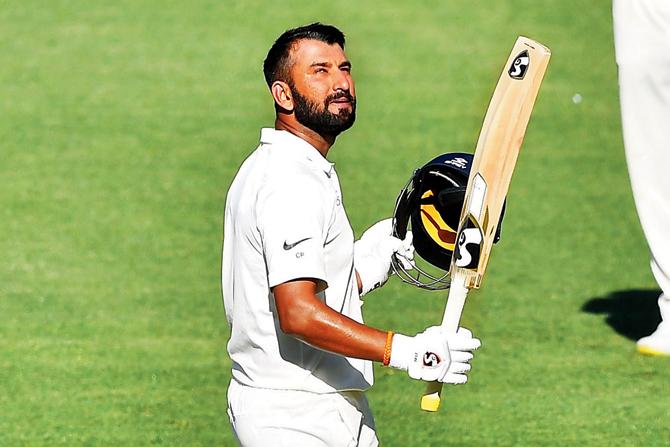Unless you are a born opener, one-drop is the ideal position to bat. Even in the event of an early loss of wicket, there's a golden opportunity to set the tone for the innings

England batsman Joe Root cuts to the boundary during Day Four of the first Test against South Africa at SuperSport Park in Pretoria last December. Pics/Getty Images
![]() If Willie Nelson had been born in Australia or England, he may have penned a different song, Mamma don't let your babies grow up to be first drop.
If Willie Nelson had been born in Australia or England, he may have penned a different song, Mamma don't let your babies grow up to be first drop.
In recent times, there's been a reticence on the part of talented players from those parts to bat at No. 3. Michael Clarke studiously avoided the position. Steve Smith has batted there but at the first opportunity, he opts for his preferred second drop position. All of this notwithstanding, a chronic weakness at three following Ricky Ponting's retirement.
ADVERTISEMENT
In England, despite regularly coming in at less than 20 for two, Joe Root has been reluctant to bat at three. He was virtually press-ganged into the role against Australia but after a relatively successful Ashes series—where bowlers dominated—he quickly slid back to No.3.
Strange stance
In each case, it's a talented batsman allowing a less qualified player to bat ahead of him in the order. That is a strange stance for any fierce competitor to adopt.
Why this aversion to No. 3? Unless you are a born opener, No. 3 is the ideal position to bat. Even in the event of an early loss of wicket, the No. 3 is still pre-empting disaster and there's a golden opportunity to set the tone for the innings. Surely, it's better to come in at one for not many rather than two for very few.
In India, where Cheteshwar Pujara has made a strength of the position, the tune is very different. Pujara grasped the opportunity to bat at No. 3 early in his career and apart from struggling in England, he's made the position an Indian strength. His spectacular success on the last tour of Australia was instrumental in helping India win a series in that country for the first time.
Mental make-up for No. 3
Without referring to stats, I've said in commentary: "If you aren't mentally attuned to going in early then No. 3 is not the spot for you."
This attitude was formed in part by memories of 1975-76 at the WACA in Perth. In four innings—two Tests and two Shield games—I was in second ball twice and in all four innings faced up in the first over. After that mind-focusing experience, a mate of mine said, "Have you ever considered walking out with the openers and standing by the square-leg umpire, it would save time."

Cheteshwar Pujara celebrates his century at Adelaide in 2018
When I actually collated the figures, I was staggered how many times a No. 3 went in at 1-0. On average, it's about seven per cent of the time and they're in before the score reaches 10 in about 30 per cent of their innings. One of the players who was saved from that situation more than most, was the batsman who needed the least protection—Sir Donald Bradman.
Of the current top batsmen who shun first-drop—Smith and Root—the Australian has no reason to claim he was victimised by batting in that position. Smith is well below the average for going in early and well above it for entering the arena when the total had passed 100. Root on the other hand, is in with the score less than 20 on an above average number occasions—which he regularly is at No. 4—so why not come in when one less wicket has fallen?
One Australian, who has embraced No. 3, is Marnus Labuschagne. Sensing a problem position with Usman Khawaja's failures away from home, he volunteered to go in at first drop. Labuschagne's tremendous success at the position has solved Australia's problem and helped stabilise the batting. Crucially, the team is now far less reliant on Smith and David Warner to accumulate sizeable totals.
I've never been a proponent of the 'best player bats at three' theory, believing this to be a hangover from the heady days of Bradman.
Nevertheless, if a team is fortunate enough to possess a talented and forceful batsman, he'll have the greatest effect at No. 3. It's no coincidence that in some of Australia's greatest eras, the No. 3s were Bradman, Neil Harvey and Ponting.
Catch up on all the latest sports news and updates here. Also download the new mid-day Android and iOS apps to get latest updates.
Mid-Day is now on Telegram. Click here to join our channel (@middayinfomedialtd) and stay updated with the latest news
 Subscribe today by clicking the link and stay updated with the latest news!" Click here!
Subscribe today by clicking the link and stay updated with the latest news!" Click here!







